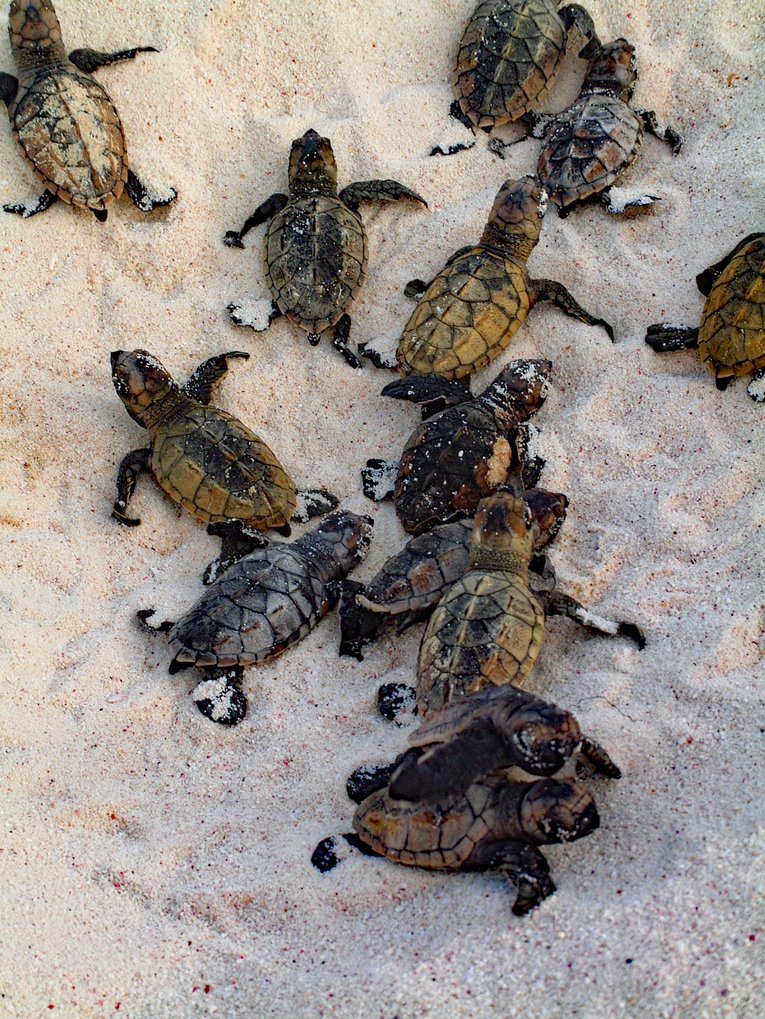
Protecting turtles projects
Marine turtles have been around for millions of years, covering great distances in our ocean and playing a crucial role in marine and coastal ecosystems.
About turtles
From keeping ocean habitats healthy and boosting local economies, to providing shelter and transport for ocean creatures, turtles play an important role in our seas.
The leatherback, the largest marine turtle, is the species most frequently recorded in UK waters.
As the name suggests, leatherback turtles have a leathery skin covering their backs (called a carapace), rather than a hard shell. They can survive in our temperate waters by maintaining a warm body temperature - the only reptile known to have this ability.
Why are turtles important animals to protect?
Protecting coral reefs and seagrass beds
Providing shelter, transport and food
Barnacles, algae, crustaceans and other small creatures attach themselves to turtles, while fish swim underneath them, sheltering from predators. One loggerhead turtle was found with up to one hundred species of plants and animals living on it!
Turtles also act as a food source for many animals which prey on them – both in and out of the ocean. Crabs, birds, fish, and land mammals such as cats, dogs, and raccoons feed on hatchlings, while larger sea creatures like sharks, saltwater crocodiles, and orcas prey on adult turtles.
Culture and tourism
Marine turtles hold spiritual and symbolic significance in various cultures around the world. The beliefs and symbolism of marine turtles depend on the culture. They can symbolise long life and abundance, patience, wisdom, endurance, a connection to Mother Earth, a connection to the past, or may be seen as messengers from ancestors.
Turtles also generate income and ecotourism opportunities for coastal communities. Whether hatching from eggs, charging to the sea or swimming through reefs, people go to watch these charismatic creatures – providing an economic boost to the communities they visit.
And, of course some countries still eat turtles, with harvests ranging from the massive commercial harvests of 8,000 to 11,000 green turtles caught per year in Nicaragua, to the small subsistence fisheries of less than 10 turtles per year in Montserrat. As long as these fisheries are managed sustainably, they can provide important cultural benefits to the communities that use them, as well as support much-needed food security for generations to come in an uncertain world with a changing climate.
Threats to turtles
These extraordinary creatures are threatened as a result of a range of human activities, from beach front development, plastic pollution and worst of all, climate change. We’re working to help protect them, and you can play your part, too, by reporting any turtles you encounter.
Decades of over-harvesting and exploitation have decimated marine turtle populations around the world. Other threats include:
- Incidental capture – turtles are often accidentally caught in fishing equipment such as long-line hooks or gill nets
- Habitat loss – industrial development and tourism can reduce the quality of feeding and nesting grounds
- Climate change – turbulent weather, rising sea levels and increased temperatures are impacting turtles and their habitats
- Predation – while turtles have natural predators such as crabs, birds and sharks, introduced species such as feral pigs and dogs can take a great toll on turtle eggs and hatchings
- Pollution – turtles confuse plastic bags as their food source jellyfish, with many dying through ingesting this and other marine litter.
Conservation and restoration
The 14 UK Overseas Territories are a fascinating and diverse set of islands. Through various projects, we're supporting our UKOT partners in the protection and management of their fragile environments and species. Our projects in the British Virgin Islands, Turks and Caicos, and Montserrat work alongside local communities to develop management and conservation measures to ensure a future for these incredible species.
In the UK, our turtle sightings project gathers reports of turtles in UK seas. We use this information to understand how environmental changes are affecting turtles, and support the rescue of stranded turtles for rehabilitation.
For over a decade, we've been working with communities to develop a shared appreciation and deeper understanding of the all the ways in which the ocean benefits them. We use the Community Voice Method to understand the values and views people have of turtles in the UK Overseas Territories which helps us shape management and conservation measures that work for everyone.
















